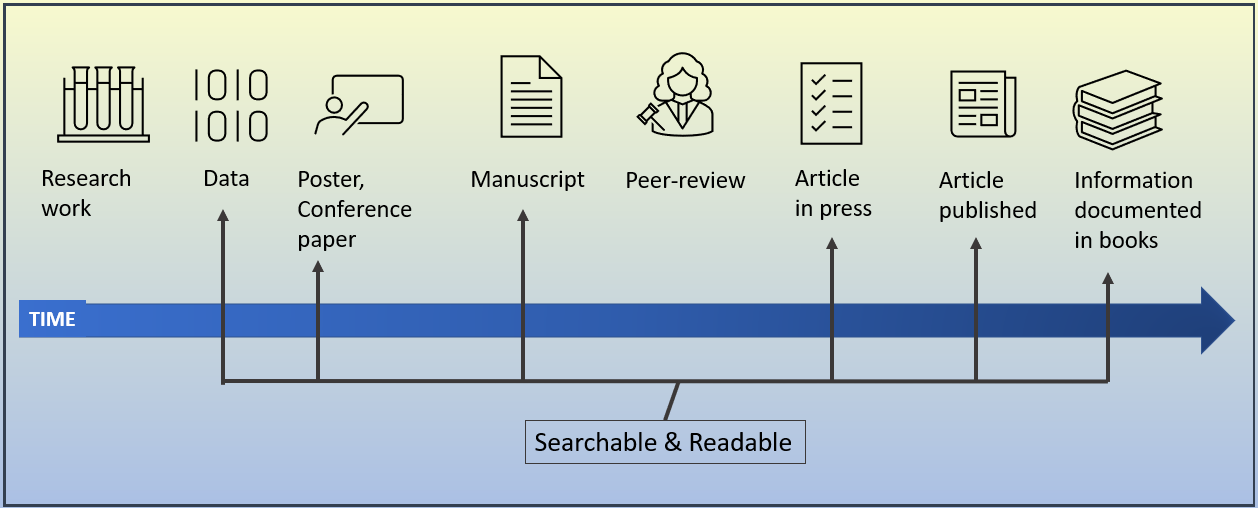Scientific publishing
The core of scientific publishing is to provide new information which is exposed to public evaluation and further processing within scientific community.
Research work starts with collecting data. This research data evolves to research information, when data is systematically, critically and comprehensively explained based on new findings and previous research. Research information is published through specialized channels, most typically in scholarly journals.

However, scientific publications have also other forms and stages and therefore there are several resources, through which the information can be found.

Peer-review is typical to scholarly journals
The strictest definition to research information is to be peer-reviewed. This means, that the article or manuscript needs to be approved by independent experts, referees, before it can be published. Referees are expected to be established scholars with expertise on the topic. There are usually two referees. It is common that the author of the manuscript does not know their identity and vice versa.
The referees evaluate the authenticity, significance and formality of the research. Both contents (like experiment design, data representativeness, analysis validity, objectivity, novelty value, conclusions correctness and logic) and the structure and level of written expression are evaluated against procedures of the discipline and the instructions of the journal in question.
Whether a journal follows the peer-review procedure can be checked:
- from the journal homepage
- this information can be false, however – some journals just claim to be refereed for imago purposes
- if the publisher is well-known and/or traditional, this information can be trusted
- from JUFO portal, a service listing quality level of journals
- from Impact factor listing (read more about impact factors from library homepage)
- from some library databases, like UEF-Primo, which indicate the status of journals.
In databases you can easily limit your search results to peer-reviewed only, showing you just the refereed articles.
Scientific publication has a certain structure
Scholarly journals follow established practices how articles are written. In addition, each journal have it’s own guidelines how to apply these common rules.
A research article usually contains at least these parts:
- Title
- Authors and their affiliation
- Abstract
- Introduction
- Methods
- Results
- Discussion
- References
Other research publications, like theses, usually follow the same formula.
According to the publication phase, an article has a different label:
- manuscript = preprint = article which is not yet peer-reviewed
- final draft = article, which is corrected according to the referees demands
- article in press = article, which is corrected and edited to its final layout, but not yet published
- final published version = article published in a journal, having all metadata, including journal issue number, page numbers/article running number and DOI identifier.
Scholarly books rely on publishers
The books usually don’t undergo same kind of peer-review process. However, publishers and editors of book series control the quality of books. Again, established and recognised publishers produce reliable materials.
Scientific publishers include:
- commercial publishers specialised in scientific literature
- research foundations
- scientific associations and societies
- universities
- research institutions
- some public agencies
To Do:
- Check the quality of a journal/an article
- Use the latest version of an article.
Next page: Document types.